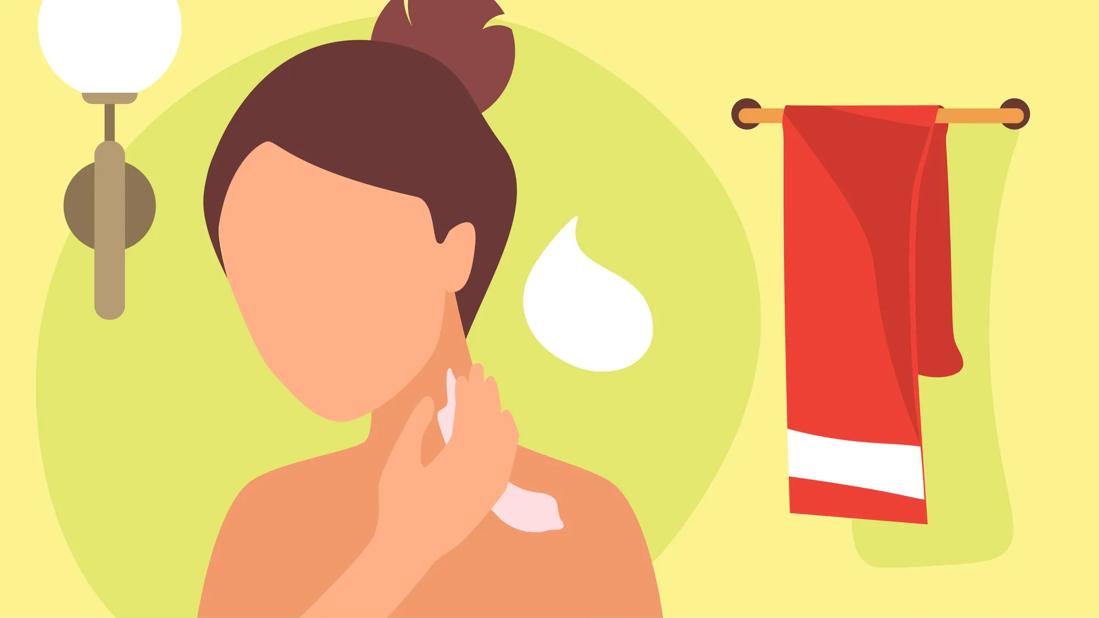These oats can help soothe dry skin and mild rashes and may help improve your skin’s microbiome

Oatmeal is good for your insides. But did you know that it’s also excellent for your skin?
Advertisement
Cleveland Clinic is a non-profit academic medical center. Advertising on our site helps support our mission. We do not endorse non-Cleveland Clinic products or services. Policy
“Aside from being nutritious in the morning, oatmeal has actually been used for a really long time — even in ancient Egyptian times for skin care,” shares dermatologist Gowri Kabbur, MD.
“Colloidal” means tiny particles suspended in liquid. And oatmeal in colloidal form is a popular ingredient in skin care products.
What’s it good for? Let’s discuss.
“Colloidal oats are oats that have been finely ground and then boiled,” Dr. Kabbur explains. “Boiling the oats extracts the colloidal material, which contains starches and other beneficial molecules.”
Colloidal oatmeal is regulated by the U.S. Food and Drug Administration (FDA), which means that research has demonstrated its safety and effectiveness.
If you browse the skin care aisle, you’ll find colloidal oatmeal products like:
But wait … what’s the big deal about colloidal oatmeal, anyway? Let us count the ways.
“It’s an excellent skin protectant,” Dr. Kabbur says. “It can moisturize inflamed or irritated skin very well.”
She explains more about the main benefits of colloidal oatmeal for your skin:
Advertisement
Colloidal oatmeal can be a helpful, safe and soothing ingredient for chronic conditions that cause the surface of your skin to become irritated, like eczema and psoriasis.
But you don’t have to have a chronic skin condition to benefit from colloidal oatmeal products. “It’s also a very good treatment for mild skin irritation,” Dr. Kabbur states. This includes:
“You can use colloidal oatmeal in a topical product that stays on your skin, like a cream or ointment. Rub it into your skin and use it twice a day,” Dr. Kabbur instructs.
You can also use products that contact your skin temporarily, like bath powder. Stay in a colloidal oatmeal bath for about 15 minutes.
To make your own colloidal oatmeal:
Homemade colloidal oatmeal is an inexpensive remedy, but it can be messy if you use it directly on your skin. For an easier (and easier-to-clean-up) experience, you may want to stick with store-bought colloidal oatmeal products.
Avoid colloidal oatmeal if you have an oat allergy. “But in general, colloidal oatmeal is well-tolerated and rarely has side effects,” reassures Dr. Kabbur. “It’s safe for children and adults.”
But if you have very sensitive, allergy-prone skin, she recommends doing a spot test first: Apply a little of the colloidal oatmeal product and wait 24 to 48 hours to see if you get redness or itchiness. If you don’t have a reaction, you should be good to use it all over your body.
Colloidal oatmeal is excellent for mild skin conditions, but it may not be enough if you have moderate to severe skin disease or bad flare-ups. If you’ve tried colloidal oatmeal and it isn’t helping, ask your primary care provider or a dermatologist about your options.
Advertisement
Learn more about our editorial process.
Advertisement

Moisturizing, running a humidifier and adjusting your showers may help keep itchiness and irritation at bay

Glycolic acid benefits skin tone, texture and pigmentation by exfoliating dead skin

Some gentle soap and warm water go a long way when you’re washing these cosmetic tools regularly

New formulas are less drying and contain water-based and skin-loving ingredients

At a minimum, in the morning, apply a cleanser, followed by a moisturizer and sunscreen, in that order

The convenient option is good for touch-ups, but it shouldn’t replace your traditional sunscreen

Olive oil works as a skin moisturizer, but it’s not right for everyone

Sunscreen, moisturizer and a topical antioxidant every day are a good start to a good skin care routine

Babies can get congested easily, but you can calm their cough by keeping them hydrated, using nasal drops and running a humidifier

Weight loss may cause loose, sagging skin and muscle loss to your rear

Several conditions, like vitiligo and fungal infection, can cause a loss of pigmentation, leading to white spots or patches on your skin